Destroying Roots or Planting New Seeds?
The significant traits of a New York neighborhood are often found in its location, in its artistic and cultural trademarks, in the ethnic groups inhabiting it and, since the history in the United States is rarely represented by something as tangible as a monument, in the symbolism (or in the few buildings or objects) linked to the heritage of a people, of one of the many immigrant group that made this country.
This is how we recognize the various blocks and boroughs, this is how we present them to a tourist. The real soul of these neighborhoods is in the community, in the transition that the changes within it have caused, but especially in the internal network, in the connections.
Essential to a community are the places of gathering. No matter where you grew
up, there must have always been a square, a shop, a bar, a church that not only functioned as a meeting center but that was central for the interactions between different groups and that physically affected the area and the landscape.
Nobody likes to see their neighborhood change, often simply for the personal memories linked to a special place. We have all experienced, even at a really young age, that sense of void and alienation when, for example, a building that had always been there disappears, or even the signs over a shop that we passed every day walking to school or work changing colors... In most cases this is just an effect of nostalgia and it just takes some getting used to but sometimes it just doesn't feel right.
It's a fairly common view that with destruction comes construction, but when this transition is actually successful we are never really talking about pure destruction: it's often a metamorphosis, a shift of what there was already there. Because before one wipes something completely off the face of earth, one should always think twice about the consequences. Thinking and proposing new ideas seem reasonable; it seems moral. As Nietzsche said, "morality is primarily a means of preserving the community and saving it from destruction".
Brownsville in Brooklyn might not be the most charming neighborhood nor the more united in terms of ethnic groups. Although now predominantly African American (75%), there are also many Hispanic or Latinos, and Asian Americans; and in the past it was the home of a huge number of Italian and Jewish immigrants.
Its history is very turbulent: since the 1910s it was the birthplace of violent gangs and associated with the idea of unemployment, crime, and poverty.
Seeing this area for the first time gave me that strange feeling of confusion that one often gets when suddenly out of the perfectly rational grid of Manhattan. The anonymity of suburbia, mixed with the bleak atmosphere of an empty movie set. Empty stores, empty streets: a place where you can easily get lost since there are few things that stand out and direct you. Finally at certain corners, explosions of color: imaginative graffiti on the grey walls, children running around and having fun, women chatting and laughing. While circling around with a cab for a half an hour I suddenly noted a big white church, Our Lady of Loreto, at the center of a street filled with greenery and trees.
Churches in New York always take me by surprise. Be it Trinity Church, Saint Patrick, or Our Lady of Loreto in Brooklyn. It is always interesting to see the contrast between the modern skyscrapers with their neighboring buildings and architectural styles taken from centuries before. As shocking the contrast might be, it would be pointless to remove them, it wouldn’t feel right, because it’s in that clash of opposites that we find a certain sense of beauty.
Our Lady of Loreto is a fairly unknown church and yet surprisingly so. It was built in 1908 in the Roman-Renaissance style. It is filled with artistic treasures, and for years it has provided a space for the Catholics (particularly the Italians but then it adapted to other communities) to practice their cult. This Church, like many other religious centers in New York City, in the past few years has drawn less and less people to its doors, causing Bishop Di Marzio (Bishop of Brooklyn) to close it down two years ago, for financial reasons.
The focus rightly shifted on the less spiritual and more pragmatic needs of the community, such as the need for housing projects, which became a priority. Hence, the decision of Bishop di Marzio and his diocese to demolish the church.
This last idea, to most people, and particularly to those who organized a rally on April 5 2010 in front of the church (by the way, the 102nd anniversary of the church’s opening, April 8, 1908), seems the least logical and quite unnecessary.
The united groups have proposed over 100 units of affordable housing side-by-side with the church turned into an arts and cultural center, which would be crucial for the community and that many of its members actively want for their children and for themselves. Then there is the issue of Art and History. Although New York is famous for quickly changing its appearance (now not as much as some Far Eastern Metropolis) when something has been around for more than 100 years, although change can be understandable, demolition and the complete removal of it is often a tricky matter.
As Mario Toglia, of the Calitri American Cultural Group,briefly explained to me: “We want to save this beautiful church because it was built as an Italian parish. The reason was that in the olden days, when the Italians came over as immigrants, they didn't feel welcome in the Irish church because at the time there were rivalries and the Irish faith had other customs. They came over with their tradition: for example they emphasized the veneration of the saints. They felt alienated and they wanted their own church and Vincenzo Sorrentino decided he would have a church built to represent the character of his congregation, It was built in the Italian Roman Renaissance style, with artistic representations. The statues were sculpted by Gaetano Federici, who was an immigrant from Castelgrande, and lived in Paterson, New Jersey. He was working together with another artist Adriano Armezzani. Here in Brooklyn, it’s their largest masterpiece. The main pediment depicts the house of Mary. The paintings inside are made by Gaetano Cappone, who painted the ceiling with a replica of Raffaello’s Transfiguration.
If the Church is demolished, some of these artistic pieces will go in storage- such as the statues and the windows- but they would also be knocked down…who knows…hopefully not…”
The Church has been determined eligible to be registered as a historic site by the NY State Office of Parks and Recreations but unless it becomes a NYC landmark its destruction is still a possibility. Most of the speakers at the rally either reminisced about the connections of the church with the past, history and the Italian American culture or endorsed the option of the Cultural Center. It was fascinating to see many of the members of the African American community (Patricia Deans, Jeff Dunston) be fascinated by the Italian American history and supporting the efforts for the preservation of the church.
Arthur Piccolo, on eof the coordinators of the event, pleaded with Di Marzio not destroy it and said: “You are not a private developer, you’re the bishop of Brooklyn”.
Charles Piazza, principal organizer of the event, reiterated the importance of combining affordable housing with the interest of the community in having a place where to gather and learn more about their roots, intertwined with other communities, or simply pursue artistic passions.
Joseph Sciame, former president of the Order of Sons of Italy, remembered when as a young boy, he lived near there and had vivid memories of spending Easter in that church with his grandparents.
The verbs used the most were network, add, change, transit, develop, in opposition to demolish or cancel. Nowadays, living in hopefully more humanistic times, it seems very unusual to wipe out something that functions as a museum, something that has any cultural significance. Especially when sometimes much smaller and less historical things (like old toys or billions of sport or rock memorabilia) are preserved and exhibited just for the sake of memory or as symbolic of a person, a place.
At the rally, the dean of the Calandra Institute, Anthony Tamburri quoted the words of the poet Felix Stefanile Who wrote: "there's no ontology without archeology".
As of now, it is not clear how this whole issue will end. It should be noted though that this is a significant matter to Italian Americans, who through artists like Federici, for example, defied certain stereotypes as immigrants. These latter do not have monuments in New York to represent them before the Catholics, the cultural institutions or, most importantly, the community of Brownsville. The neighborhood, no matter what religion or race, will be more united and uplifted by the power of history and art.































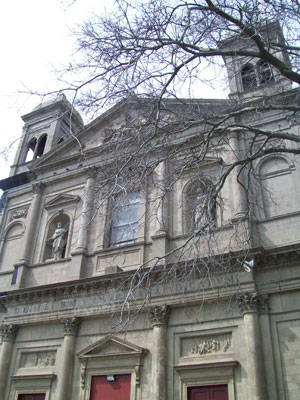
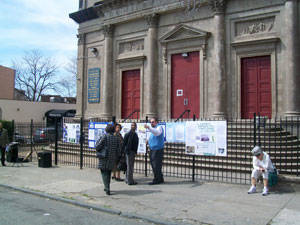
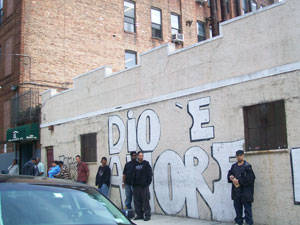
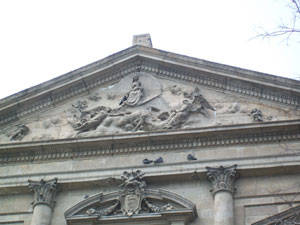
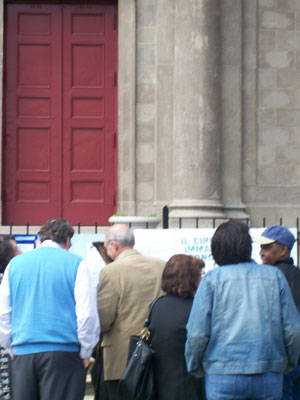
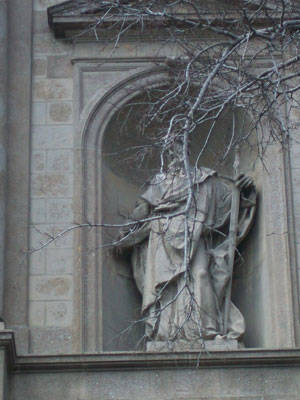
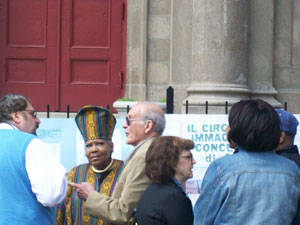
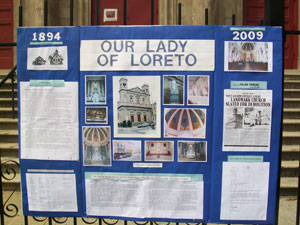
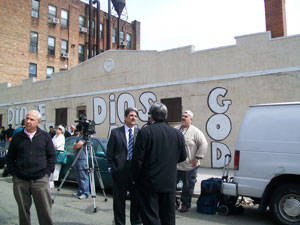
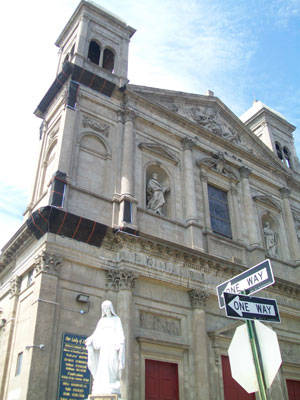






i-Italy
Facebook
Google+
This work may not be reproduced, in whole or in part, without prior written permission.
Questo lavoro non può essere riprodotto, in tutto o in parte, senza permesso scritto.